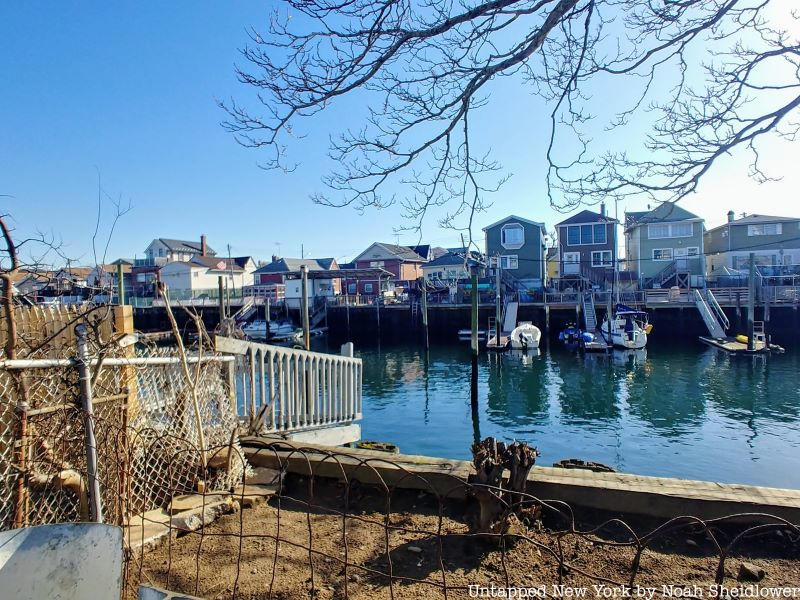
Gerritsen Beach may be one of the quietest and most tight-knit neighborhoods in Brooklyn. Located between Sheepshead Bay and Marine Park, Gerritsen Beach is a secluded peninsula in the southern part of the borough. The neighborhood consists primarily of quaint, tightly packed bungalows and homes on narrow, short streets. Many have described the community as family-oriented and removed from the hustle and bustle of the city. Gerritsen Beach boats a handful of businesses, views of the Plumb Channel, and Gerritsen Creek. Despite its relative insularity from the rest of the city, Gerritsen Beach has quite a few fascinating historical secrets. Here are eight secrets of Gerritsen Beach.
1. There is an uninhabited island off the coast of Gerritsen Beach that hosted a mock naval battle
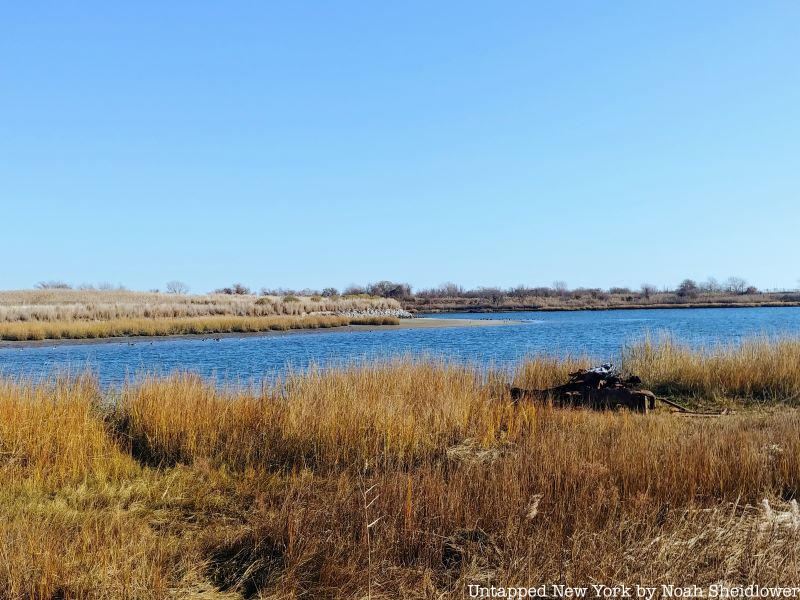
Off of Gerritsen Beach is an uninhabited island named Mau Mau Island, or White Island. The island sits in an inlet between Gerritsen Beach and the Marine Park Golf Club, visible from a rather secret beach at the east of Gerritsen Beach Park. The abandoned island is actually manmade and is potentially under 100 years old. The area was originally a salt marsh, 150 acres of which were donated by Frederic B. Pratt, the son of Pratt Institute founder Charles Pratt, and Alfred Tredway White, the Wall Street philanthropist behind Brooklyn Botanic Garden. Some sources say the island came into existence after 1917, though it likely formed as late as 1934. Robert Moses created nearby Marine Park by taking the city’s trash to fill marshlands, as ocean dumping had been banned a few years earlier. Funnily enough, Moses took sand from the excavation of the Belt Parkway and layered it on top of the garbage of Mau Mau Island, which restored some of the greenery.
In 2011, NYC Parks began a restoration project that would restore the salt marsh and bird habitat. Also in 2011, a mock naval battle on Mau Mau Island made local headlines. A small artists’ collective called Swimming Cities hosted the naval battle that included “gangs” like Notorious G.I.G. and S.S. Botulism that assembled makeshift sea vessels. The gangs competed in boat jousting and rowing races around the island. The island is now considered a bird sanctuary and can also be viewed from a nature trail at the Marine Park Salt Marsh Nature Center.
2. Gerritsen Beach has the last remaining volunteer fire department in Brooklyn
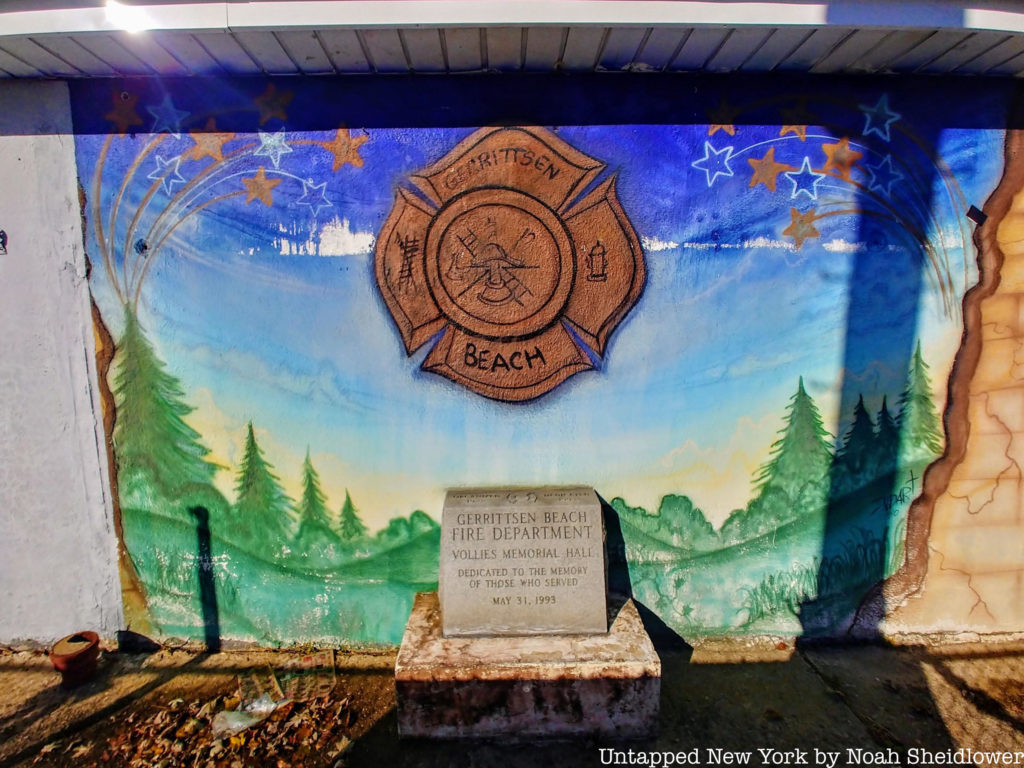
Gerritsen Beach has the last remaining volunteer fire department in the borough, which has responded to major events throughout the city’s history. The department uses the name Gerrittsen Beach Fire Department with an extra “t,” as reflected on a mural and memorial on Seba Avenue. Nicknamed the “Vollies,” the volunteer fire department was organized in 1922 just when the neighborhood became a summer-resort community. It was formed after a 1921 fire that took the FDNY way too long to reach, as the FDNY did not have a fire station nearby at the time; it took until 1930 for an FDNY firehouse to be built on Gerritsen Avenue. Volunteer members were trained to respond to fires, save people from drowning, and help in many other types of emergencies.
Over its 100-year history, the Vollies (or Vamps, as they were originally called) have responded to all sorts of crashes, emergencies, and weather phenomena. They assisted with the 1960 New York mid-air collision, in which a United Airlines Douglas DC-8 crashed with a TWA Lockheed L-1049 Super Constellation, killing all 128 people on board both aircraft. Just three days later, they ought a blaze on board the USS Constitution. During 9/11, the department shifted operations further north to respond to emergencies in Marine Park and Sheepshead Bay while the vehicles originally stationed there could respond to 9/11 victims. And during Hurricane Sandy, the department helped rescue and evacuate residents, as well as opened a relief center.
3. The “mayor” of Gerritsen Beach almost got the 1939 World’s Fair at Marine Park
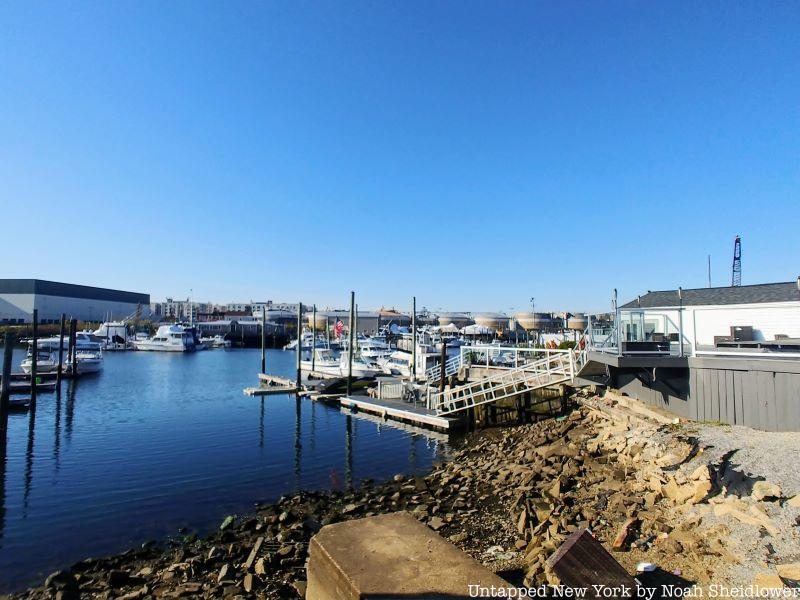
In the early years of Gerritsen Beach, the isolated community established some community initiatives separate from the rest of the city. These included a Civic Association and Chamber of Commerce, and, strangely, a “mayor” and a commissioner of parks and public welfare. These new positions allowed the community to address issues far faster than waiting for city officials. In July 1935, a fundraiser for a local church also included a mayoral election for Gerritsen Beach, which was surprisingly competitive. A debate between fellow Irishmen Reverent Cox and Peter J. McGuinness was part of the fundraiser and attracted over 7,000 attendees including Supreme Court Justices. According to the Gotham Center for New York City History, in June of that year, 123 people submitted their candidacy, and this number was narrowed to just six by July. Thomas G. Hunter was declared the winner. The win was unsurprising as Hunter was President of both the Gerritsen Beach Republican and Gerritsen Beach Regular Democratic Clubs.
At Hunter’s inauguration, Cox made a plea for the 1939 World’s Fair to be held at Marine Park instead of Flushing Meadows. There had earlier been designs for the 1932 Washington Bicentennial Exposition to be held at Marine Park that fell through. Hunter prioritized this project above all others, asserting costs would only be between $15-$20 million and construction would be less risky than in Flushing. Hunter attacked Borough President Raymond Ingersoll for not supporting the project, which he believed would have significant economic benefits for Brooklyn. Local Assemblymen even expressed some commitment to advocacy, though Robert Moses decided to develop Flushing Meadows-Corona Park as the official site.
4. There was a “czar of Plumb Beach”
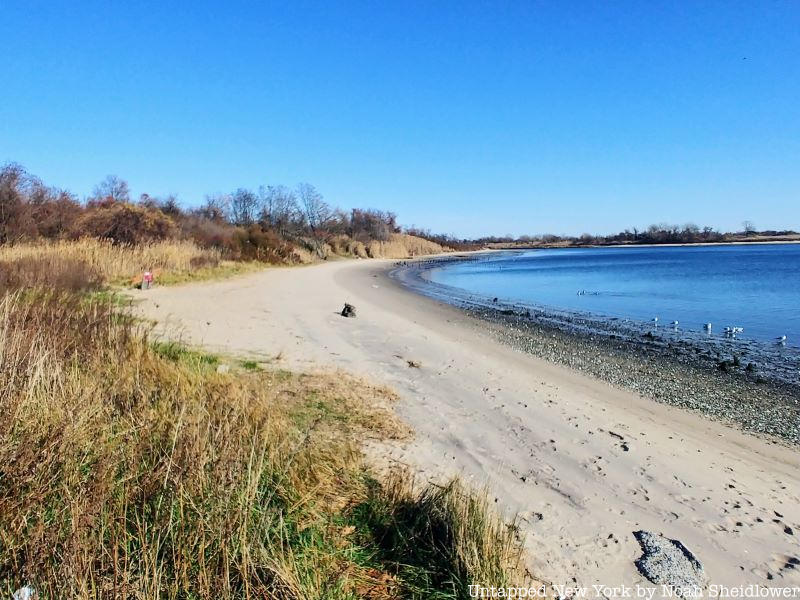
Plumb Beach is a hidden beach near Gerritsen Beach, partly visible from the southern end of Gerritsen Avenue. The small beach attracts kiteboarding enthusiasts due to a southerly sea breeze. Despite heavy beach erosion, the beach is also a habitat for horseshoe crabs every May and June. The beach was originally a separate island until the nearby Hog Creek was filled in with the creation of the Belt Parkway. It is likely the beach’s name derives from when sailors stopped on the island and ate native beach plums. Plumb Beach was a popular destination around the turn of the 20th century when a ferry connected it to Sheepshead Bay, Barren Island, and Breezy Point.
Even before the ferry, the federal government purchased part of the island to use as a mortar battery, which quickly became a home for squatters. While the government tried to figure out what to do with the island in 1907, then-Secretary of War William Howard Taft agreed to lease the island to Judge Winfield S. Overton. Though, Overton took things a little too far. He declared himself the island’s “czar” and created his own police force. He also hired two local Army companies to evict squatters from the island. Best of all, he believed he was above New York State laws. He held “carnivals” with boxing matches, which at the time were illegal, pulling in large crowds to watch members of the “United States Military Athletic and Sporting Club.” By January 1909, the Department of War overturned the lease, and Overton was removed from the island, though not for long. Frank Dotzler, the island’s new “mayor,” also ruled the island with an iron fist before word spread that Overton was to return in May. Local infantry units were sent to stop Overton’s “invasion” of Plumb Island successfully.
5. Gerritsen Beach is often considered a predecessor to Levittown
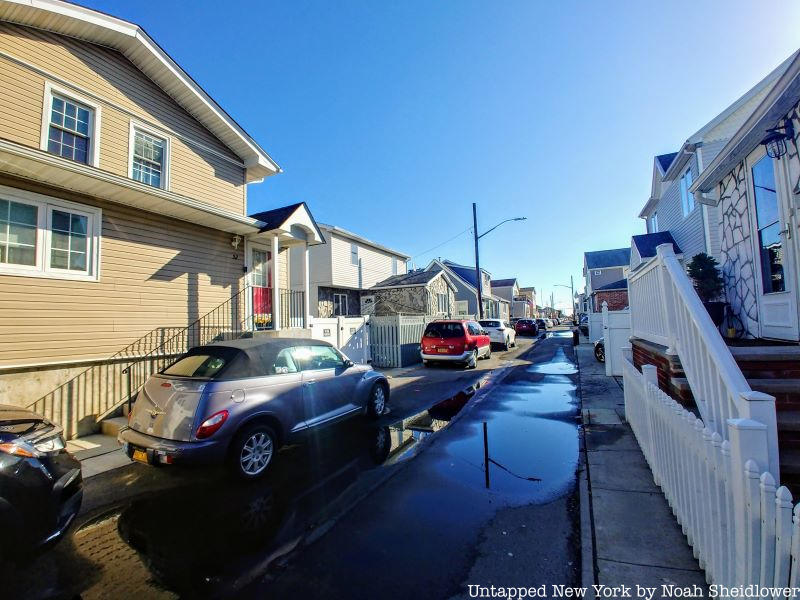
Many New Yorkers may be familiar with Levittown, the planned Long Island community that was a breakthrough for planned middle-class housing. But over two decades earlier, Gerritsen Beach pioneered the suburban model that would inspire dozens of others in the early 20th century. William Greve, President of Realty Associates, had earlier erected thousands of homes across the borough in neighborhoods like Crown Heights and Bay Ridge, though he had his eyes set on Gerritsen Beach for his most ambitious project yet: a series of cheap bungalows that in many ways mimicked Venice. According to Bloomberg, Greve himself said he wanted to emulate Henry Ford-style manufacturing, producing these homes as efficiently as possible. The bungalows would be accompanied by shops and restaurants, a community clubhouse, and a place of worship.
With a workforce of 500, Greve led an assembly line in creating over 600 houses over just two years. The bungalows were arranged in a semi-grid with miniature blocks about a third the length of a typical city block, narrow enough to fit just about a car and a half. About 5,000 people rushed to purchase one of these homes, which did not exceed $5,750, or a bit over $80,000 today. Many of these new residents were working-class Irish, Swedish, and German New Yorkers. Greve kept going. Some 1,500 homes were erected by the time he was finished with his project. Gerritsen Avenue was one of the more popular streets in Brooklyn by the mid-1920s, with about two dozen shops and restaurants opening their doors; there were even attempts to get William Van Alen, the architect behind the Chrysler Building, to design a theater and dance hall. Despite this rapid development, it took about another decade to get a school in the area, as well as more sufficient transportation.
6. There are still remains of the 17th-century Gerritsen Creek grist mill
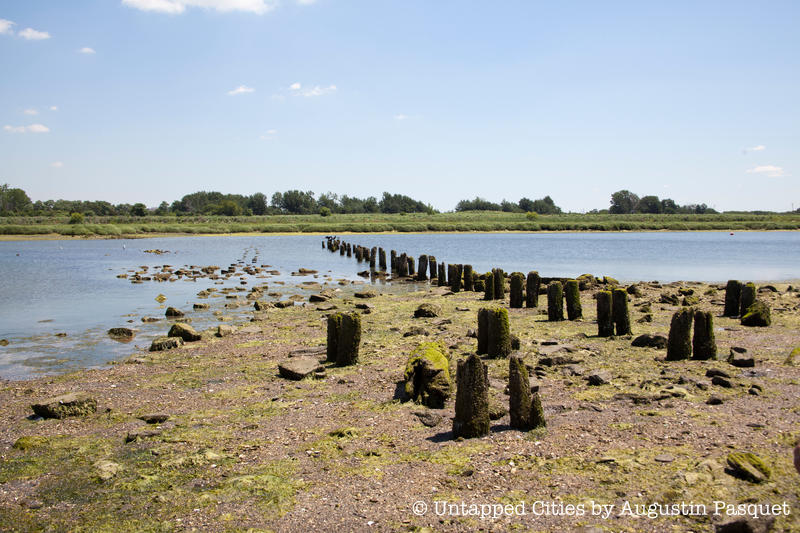
Gerritsen Creek gets its name from the Gerritsen family (or Gerretse), early Dutch settlers who inhabited the area for three centuries. The creek was the original port of entry for the Dutch and an important trading dock for southern Brooklyn. In the mid-1600s, Hugh Gerritsen built the first tide-powered grist mill in North America at the creek in present-day Marine Park, according to NYC Parks. The mill even ground flour, corn, and grains for the troops in General George Washington’s army during the Revolutionary War. The grist mill operated until 1889, and the property was sold to Gilded Age tycoon William C. Whitney a decade later.
In 1928, over two decades after the mill was donated to the city, the estate announced plans to restore the mill. By then, the mill was subject to vandalism and damage, When renovation began in the 1930s, only one wall of the estate’s home was stable. In 1935, after the exterior renovation was completed, the house burned down at the hands of an arsonist, destroying the mill that had operated for well over 200 years. In low tide, visitors to Marine Park can see the remnants of the dam and the foundations of the mill.
7. Gerritsen Beach has some interesting street names
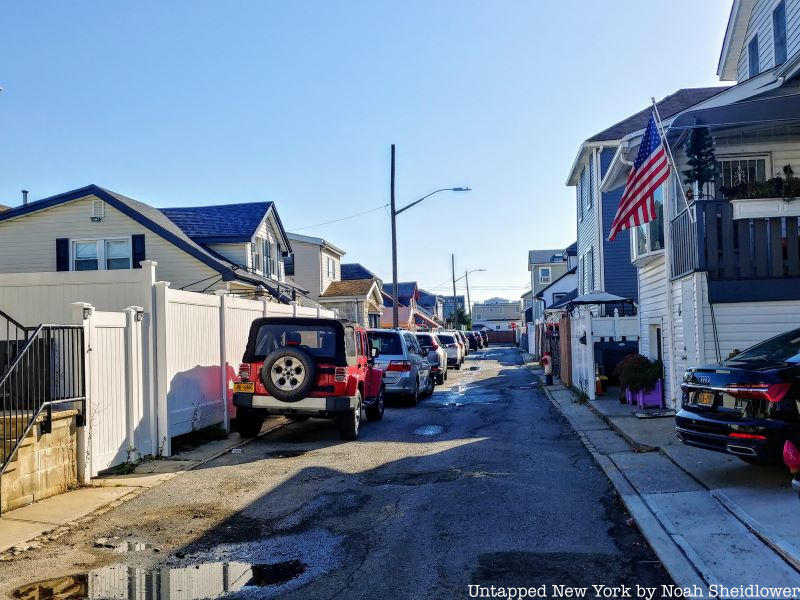
Gerritsen Beach, in the spirit of Venice, has a canal that nearly divides the peninsula in half, partly visible from Gerritsen Avenue. It can also be viewed between homes on Bartlett Place and Gotham Avenue, the latter a nod to New York’s over 200-year history. This is one of a handful of streets in Gerritsen Beach with some fascinating names, though there are not many stories explaining how they landed. Many streets are laid out in alphabetical order from east to west and in some places from north to south.
Among them are Plumb 1st St. and Plumb 2nd St., which are misleadingly named as they are all the way north of the neighborhood away from actual Plumb Beach. There is a Bijou Avenue, which intersects Dictum Court and Ebony Court. There is also a Joval Court, a Melba Court, an Opal Court, and a Dare Court. Noel Avenue juts between Frank Court and Gain Court to break the alphabetical order, while Seba Avenue intersects with Just Court.
8. There is a model airplane field in Gerritsen Beach
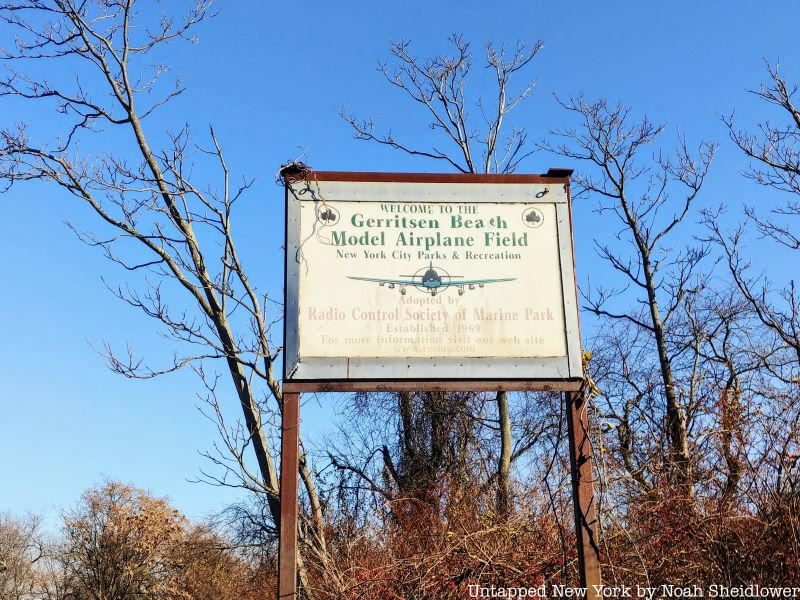
Gerritsen Beach is home to a somewhat dilapidated but still functioning model airplane field. The field is located right off Gerritsen Avenue between Seba and Lois Avenues, demarcated by a sign stating that it was adopted by the Radio Control Society of Marine Park and established in 1969. RCSMP is a charter club of the Academy of Model Aeronautics that strives to help radio control pilots become better pilots. The club originally launched and landed gas-powered aircraft on a dirt runway, though NYC Parks later paved a runway to prevent damaging aircraft. The club has previously put on high-flying model plane stunt shows to support the local community.
Next, check out the Top 10 Secrets of Sheepshead Bay!





